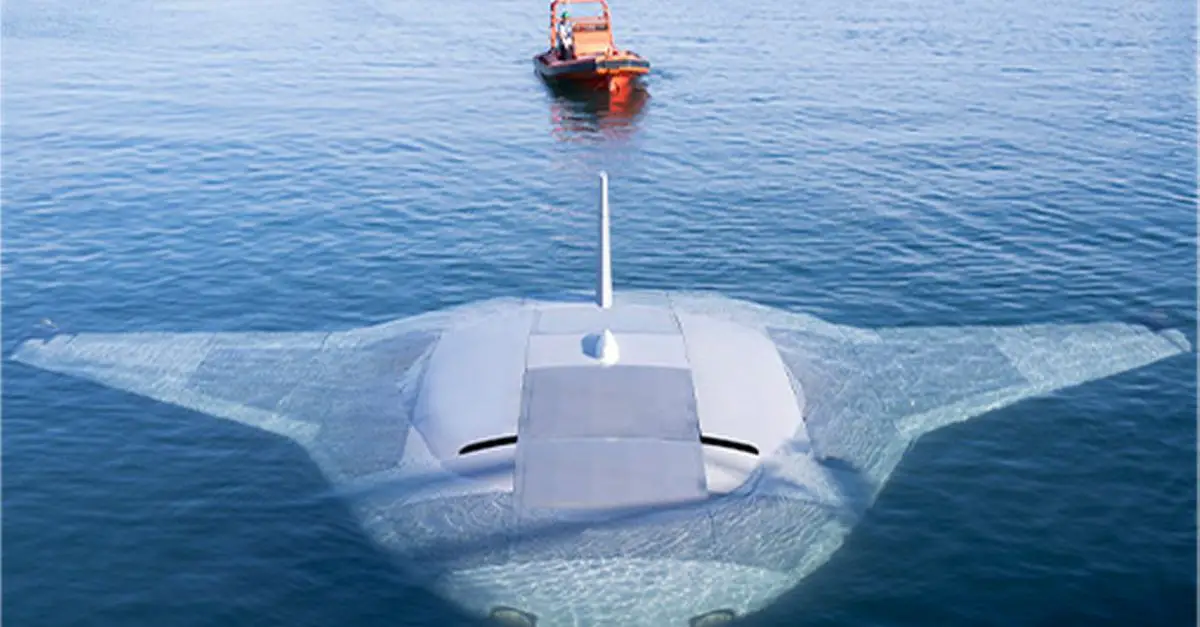Breaking news
Northrop Grumman's Manta Ray Extra Large UUV successfully completes sea trials.
According to information published by the DARPA on May 1, 2024, the prototype Manta Ray Uncrewed Underwater Vehicle (UUV), developed by Northrop Grumman as part of DARPA's Manta Ray program, has successfully completed full-scale, in-water testing off the coast of Southern California.
Follow Army Recognition on Google News at this link

Manta RAY prototype Extra Large Uncrewed Underwater Vehicle. (Picture source: DARPA)
The testing, conducted in February and March 2024, showcased the UUV's submerged operations using all propulsion and steering modes, including buoyancy, propellers, and control surfaces.
The successful full-scale testing validated the vehicle's readiness for real-world operations after being rapidly assembled in the field from modular subsections. The combination of cross-country modular transportation, in-field assembly, and subsequent deployment demonstrated a first-of-its-kind capability for an extra-large UUV.
The Manta Ray prototype was shipped in modular subsections from Northrop Grumman's Maryland facility to California, allowing for rapid global deployment without occupying valuable pier space at naval bases.
Shipping the vehicle directly to its intended area of operation conserved energy that the vehicle would have otherwise expended during transit. Once in the water, the vehicle used efficient, buoyancy-driven gliding to navigate through the water. It was designed with multiple payload bays of varying sizes and types to support a wide range of naval missions.
The Boeing Orca XLUUV shares some similarities with the Manta Ray, such as its large size and modular design. Both vehicles can operate for extended periods and carry various payloads, including mine detection systems and surveillance equipment. However, the Orca differs by offering a range of sensors specifically for mine countermeasures.
Australia's Anduril Ghost Shark, another extra-large uncrewed underwater vehicle, is designed for long-range missions in the Indo-Pacific region. Like the Manta Ray, it offers modular payload flexibility and fully autonomous operation, suitable for intelligence, surveillance, and reconnaissance (ISR) missions.
Meanwhile, the Saab AUV62-AT focuses on anti-submarine warfare (ASW) training but can be adapted for ISR and mine countermeasures. While autonomous, it offers shorter mission endurance compared to the Manta Ray due to its smaller size.


























